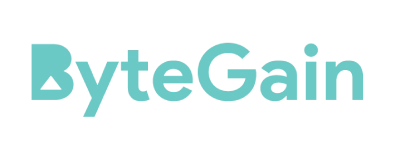In this article, I have shared my knowledge on “E-learning Statistics”
E-learning is a rapidly growing field that uses technology to deliver educational content. E-learning can take many forms, including online courses, webinars, and simulations.
E-learning is often seen as an alternative to traditional classroom-based instruction, but it can also be used to supplement face-to-face teaching. E-learning has many benefits, including increased accessibility, flexibility, and cost savings.
E-learning is also becoming increasingly popular due to the COVID-19 pandemic, as it provides a way for students to continue their education even if they are unable to attend school in person.
E-learning is here to stay, and it is sure to have a major impact on the future of education.
As a result of the epidemic last year, the eLearning sector was thrown into disarray. Organizations had to digitise their whole operations, including onboarding, training, and development programmes, in a matter of hours.
In 2025, the global shift to digitised workplaces will have a significant impact on how we approach learning and development.
In order to assist you in modernising the training of your teams and selecting the eLearning options that will be most beneficial for your teams in the year 2023, we have examined the most popular features and forms of eLearning, such as mobile learning, gamification, and microlearning, amongst other examples. In order to balance out the report, we have also supplied some interesting facts regarding eLearning.t.
EdApp is a pioneer in the field of eLearning. A unique insight into an underreported market can be gained from EdApp’s internal data. The company provides over 50,000 courses daily, making it one of the largest mobile microlearning platforms on the market.
E-Learning Statistics 2025
Social Learning Statistics
- Learners and admins share reflections and ideas using Discussions, a forum-like social learning tool that allows them to share thoughts together (Internal EdApp data from 2021)
- Thirty percent of administrators use Assignments, a question-and-answer function that allows administrators to track student progress and provide immediate feedback. (Internal EdApp data from 2021)
- Twenty-six percent of respondents said they prefer gamified activities with real-time performance feedback.
(Source: eLearning Industry) - At least 75% of the knowledge people get in the job comes from social learning. (Source: eLearning Guild)
- A majority of workplace learning takes place informally, including knowledge exchange between team members and informal lunchtime discussions. (Source: Bloomfire)
- Shared social information is critical to 87 percent of employees. Formal workplace training is only deemed important by 37% of workers.
- The use of social learning boosts course completion rates by 85 percent. (Source: eLearning Industry)
- More than 60% of firms want to see their employees connect with learning tools on a daily basis, and 73% of companies want to enhance their focus on social learning. (Source: Brandon Hall Group)
COVID-19 Impact Statistics
- Since the release of COVID-19 in March 2020, EdApp’s monthly active users have increased by more than 320 percent. (Internal EdApp data from 2021)
- Many learners have been educated on health and safety through COVID-19 courses since the outbreak began. In the past five years, COVID-19 has been imported three times out of five. (Internal EdApp data from 2021)
- Seventy-four percent of L&D professionals regard skill building as the most important part of rebuilding for the future, while 62 percent are active in helping employees improve their skills.
- As a result of the COVID-19 epidemic, 82% of decision makers plan to improve digital learning resources.
- 81 percent of learning leaders plan to implement new training methodologies as a result of the epidemic, 70 percent expect to change the ways in which they deliver training, and 73 percent want to create more customized content, according to a survey by Chief Learning Officers 2020.
- In reaction to the pandemic, 94 percent of firms adjusted their learning priorities and L&D strategy, with two-thirds making major adjustments to what they do and how they do it. (Source: Fosway Group).
What’s Next For ELearning in 2025?
Mobile microlearning remains one of the most successful ways to upskill, teach, and engage teams, especially as work from home and minimal face-to-face contact become more common in many firms.
Because microlearning allows your staff to interact with brief, highly-targeted lessons created with human limits in mind, such as attention span and memory, crucial concepts are easier to digest in real-time from the comfort of their own devices.
Quick Links:





